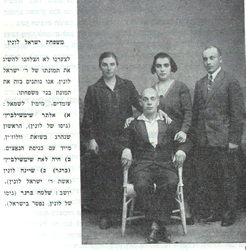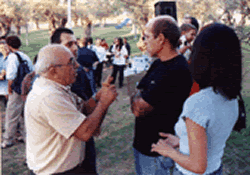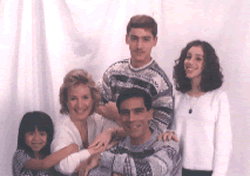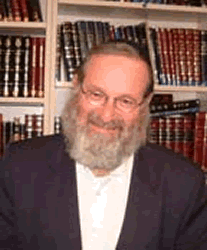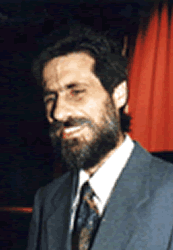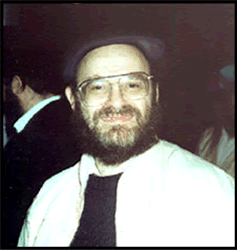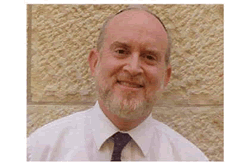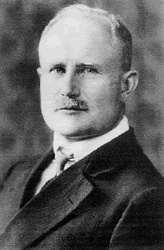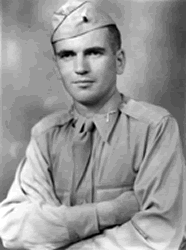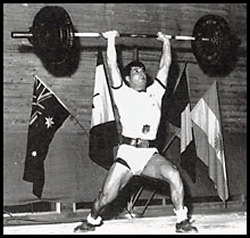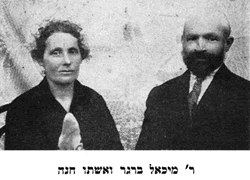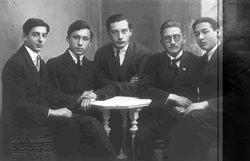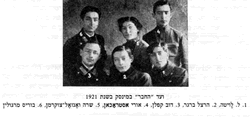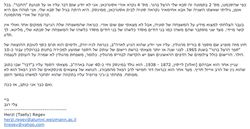Co-Existence in Kfar Veradim
by Zvi Berger
We ushered in
the New Year of 5761 with the usual feeling of renewal and high hopes
characteristic of the Days of Awe period. But by the end of Rosh Hashana,
we all felt a glaring incongruity between our greetings of "shana
Tova u'mtuka" (a good a sweet year) and the bitter reality. Rioting
had broken out all over the territories, and it quickly spread to Israel
proper. The "intifada al-Aqsa" had begun. It was most assuredly
not a happy New Year in the land of the children of Abraham.
Most of the rioting within Israel occurred in the region where I live,
the Galilee. This beautiful mountainous region, usually characterized
by its pastoral and colorful atmosphere, quickly became stained with the
blood of violent confrontation between police and Israeli Arab demonstrators
in numerous cities and villages, such as Arrabe, Sakhnin, Nazareth, and
Kafr Kana. Rioting also broke out in Haifa and Akko.
For Israeli Jews in our area, the shock was, (and still is), profound
and extremely upsetting. On one level, we're shocked and distraught concerning
the loss of life on both sides, and many of us share the deep concerns
of the larger Israeli "peace camp". Clearly, the escalating
spiral of violence in the territories has dealt a critical blow to the
peace process, and could well lead to war not only with the Palestinians,
but even with neighboring Arab countries.
But closer to home, we were shocked by the outbreak of violence amongst
our neighbors. Israeli Jews primarily responded with fear and with anger.
I live in Kfar Vradim, where I work as the rabbi of the local Masorti
(Conservative) community, and as the Northern Region Coordinator for the
Masorti Movement. Kfar Vradim is a beautiful village of about 5,000 residents,
located in Upper Central Galilee, about 10 kilometers from the Lebanese
border. There are many Arab communities nearby, including Tarshicha (Muslim
and Christian), Me'ilya (Christian), Yanukh and Hurfeish (Druze).
In general, relations between Jews and Arabs in the region are very good,
though there is some tension due to conflicts over land allocation. In
our area, the residents of Tarshicha are particularly concerned that the
expansion of Maalot and of Kfar Vradim will lead to the further diminishing
of land available for the next generation of Tarshicha residents.
When the rioting broke out in early October, a demonstration was organized
in Tarshicha, and there were isolated incidents of stone throwing at Jewish
vehicles. While the level of violence was much less than what occurred
in the Misgav region, many Kfar Vradim and Maalot residents nonetheless
were shocked and angered by the hostility expressed by their neighbors.
Some Jewish residents began boycotting local Arab businesses, and tension
was rampant.
In light of this disturbing chain of events, a number of Jewish and Arab
residents from the area made plans to meet to reestablish dialogue between
the communities. A number of meetings were held, in which both Jews and
Arabs expressed themselves freely and candidly. The atmosphere was intense,
as Jews expressed their anger as well as their fears, and Arabs described
the ongoing frustrations which contributed greatly to the outbreak of
violence.
Despite the tension, however, discussions were held in a friendly atmosphere
of mutual respect and shared concern. I recall one meeting was held during
an evening in which the armed confrontations in the territories between
the Palestinians and the I.D.F. were particularly intense. As we left
Tarshicha, a Jewish friend sighed as he pointed out how we leave the meetings
with such a good, hopeful feeling, "and now we have to go home, turn
on the news on TV and go back to reality..." The frustration was
not only his, it is common to all participants in the dialogue, Jewish
and Arab alike.
Yet despite our anguish and concerns over the deterioration of the general
situation, we still felt that we awerere succeeding in something important
in our own region. Plans were made for a large, publicized event in Tarshicha,
whose goal would be to facilitate a larger scale dialogue between area
residents.
And so on Oct. 19th, over 200 Jews and Arabs gathered to share their concerns
and feelings concerning the events that had transpired. The event was
a resounding success. Over 100 people signed a list, expressing their
desire for continued dialogue and shared activities. About a week later,
we met in order to determine where to go from there.
It was decided to split the list into 10 small groups, which would meet
to further the dialogue. Each group is to decide on the nature and framework
of its activities, and each hopes to add more area residents. Most groups
have already met, and a variety of different avenues of involvement are
being considered, including Arabic study, interfaith projects, cultural
events, and of course, further political discussions (which may lead to
joint lobbying efforts).
Yes, it's difficult to watch the disintegration of the peace process,
and our worries and fears are still very much with us. But, even if we
can't have a great effect on the macro level of the overall Israeli-Palestinian
conflict, we can influence the micro level of day-to-day relations between
Israeli Jews and Israeli Arabs.
As Chanukah approaches and we recall the heroism of the Maccabees, we
do well to remember the words of our Sages: "Ayzehu gibor sh'b'giborim?
Mi sh'oseh son'o ohavo". "Who is a hero among heroes? He who
turns his enemy into his friend."
On August 4, 1992, we piled
into our car for the long trek to Newark Airport to meet Continental
flight 242 due at 11:30 PM. The big silver stork carried all of our
hopes and dreams, and when four-month-old, Guatemalan-born Chloe was
brought off that plane and placed in her father's arms, I knew that
we had received a most special angel. She still runs halos around our
hearts. I suppose that's how my Dad felt when I was born. Ever since
I can remember, he sang a song to me called, "You Are My Special
Angel" and we danced to that song at my wedding. I started singing
it to Chloe, and a tradition was born.
I always wanted to be a mom. In fact, I thought I would have biological
children as well as adopt a child.....
....Luckily, we came across an ad for an agency in Central New Jersey
who had infants available for immediate placement. We contacted the
agency on February 26 and on August 4th our special bundle was delivered.
Our 10-year-old daughter Jenn, and 12-year-old son Scott, (my husband's
children from a previous marriage) were very excited about their new
sister. One day Jenn wisely told us that adopting a child was almost
the same as having biological children. "Mom, I wouldn't worry
about not having a biological child. You teach me your values and you
will teach Chloe your values, so there will always be a part of you
with us." Out of the mouths of babes!!! Now at 18, Jenn marvels
at the depth of her love for this stranger who came into our lives that
summer seven years ago. for the rest go to http://www.interfaithfamily.com/issue53.htm
As a graduate of the Telshe Yeshiva, Rabbi Berger brings to Kollel Dirshu the depths of knowledge afforded by learning torah directly from the mouths of gedolim.
Kfar Vradim
Rabbi Berger is one of the pillars of the New York Breslov community. Like many American Breslovers of his generation, he was introduced to Rebbe Nachman's teachings in his pre-teen years, while studying at the Toras Emes Yeshiva under Rabbi Zvi Aryeh Rosenfeld z"l. He remained at Rabbi Rosenfeld's right hand throughout for almost three decades. After completing his studies at the Chaim Berlin high school, he attended the Mir Yeshiva, where he became a devoted student of HaRav Shmuel Brundy z"l. This master teacher gave him both a derech halimud in Shas and a spiritual model toward which to aspire. Subsequently, he went on to study under the Gaon HaRav Leizer Yidel Finel z"l in Jerusalem's Mir Yeshiva. There he became friendly with Rabbi Shmuel Moshe Kramer shlita and Rabbi Nosson Zvi Kenig z"l, both of whom became key figures in Israel's Breslov community.
Rabbi Berger is the founder of "Jews For Judaism", and has been on the faculty of Aish HaTorah in Jerusalem for 16 years. He lectures throughout the world, and while in Atlanta, he spoke at Bnai Torah, Temple Sinai & Emory University
Berger's research interest was centered on intracranial blood circulation and electrical activity of the brain. He studied Richard Caton's work on action potentials in animals and developed an instrument that measured and recorded electrical activity. In 1924, he measured the first electrical activity of the human brain as an electroencephalograph (EEG). After five years of investigation and re-examination of his results, he published his findings. He reported that the brain generates electrical impulses or 'brain waves'. The brain waves changed dramatically if the subject simply shifts from sitting quietly with eyes closed (short or alpha waves) to sitting quietly with eyes opened (long or beta waves). Furthermore, brain waves also changed when the subject sat quietly with eyes closed, "focusing" on solving a math problem (beta waves). That is, the electrical brain wave pattern shifts with attention.
After his findings were confirmed, the electroencephalogram was launched into use for the study of normal and abnormal human brain activity. The EEG revolutionized neurological and psychiatric diagnosis and made possible specialized research in the neurological sciences. Today, the EEG is used in the clinical diagnosis of serious head injuries, brain tumors, cerebral infections, epilepsy, and various degenerative diseases of the nervous system.
Curator: Julie Heath and
Jacque Havelka
Responsible NASA Official: Katherine Newkirk
Professor Robert E. Berger, a faculty member at the Faculty of Arts and Science for over three decades, had a longstanding interest in European immigration. His father, Eugene, had emigrated from Germany in 1907, and became a naturalized US citizen in 1917, just in time to enlist in the US military to serve in World War I. Now, thanks to a generous bequest of Robert Berger’s entire estate, students and faculty members at FAS can advance scholarship in the area that played a formative role in his life and that of his family.
A lifelong resident of Queens, Professor Berger received his degrees, including his doctorate in political science, at Columbia University. He earned his graduate degrees after serving in the Army through World War II.
Professor Berger joined the faculty of NYU in 1956 and received tenure in 1961. In 1968, he became Assistant Dean of FAS, while continuing his teaching duties in the Department of Political Science. Beginning in 1971, he took on additional administrative responsibilities with regard to registration and program coordination. He became closely involved with pre-law students and programming at Washington Square College, and, as a mentor to the College’s pre-law students, grew to be seen as a beloved father figure. In recognition of his dedication and support, Professor Berger was honored by the students’ Pre-Law Society.
After Professor Berger retired from the faculty in 1989, he continued to reside in the Queens home in which he was raised, and maintained a collection of materials and memorabilia on the subject of European immigration to the United States. His frugality was legendary among his colleagues and students, and his careful financial planning enabled him to leave a legacy of over $2.5 million to NYU. In his will, Professor Berger asked that his estate be used by the Department of History to support students, academic programs, and research in the field of European history with a special focus on European immigration.
Richard Foley, dean of the Faculty of Arts and Science, said, “We are delighted that our former colleague has chosen to support an area of scholarly inquiry that was so close to his heart here at NYU, and we are doubly delighted that his gift will add to the already impressive strengths of our Department of History in European history and immigration history. The forces of globalization are making it increasingly critical for people to have an understanding and appreciation for the historical importance of immigration. The financial aid and programming made possible by Professor Berger’s gift will help future generations acquire this understanding.�
To learn more about estate planning and the benefits of naming the University in your will or living trust, contact Alan Shapiro, Esq., Director of Gift Planning, at (212) 998-6960.
This article originally appeared in NYU Today (September 5, 2002).
David, son of
Ben and Dorothy Berger.
Dadid trained at the only lifting gym in Cleveland, marking meticulous
details of every lift in a diary with such words as "easy,"
"ugly" and "ouch." He traveled briefly with the U.S.
national team but, realizing his Olympic hopes in this country were slim,
emigrated to Israel in 1970, after receiving an undergraduate degree from
Tulane and an M.B.A. and a law degree from Columbia. In Jerusalem he was
among the first people to teach sports, including weightlifting, to the
disabled.
click here for the article
http://sportsillustrated.cnn.com/si_online/news/2002/08/20/sb1/
#brgr-12
From: Herzl Regev <hregev@yahoo.com>
We found a photo of my grandfather Binyamin Herzl Berger, his brother Max (Markus) and three more young men, but the time and place is unknown.
The appearance of the brothers suggests that the picture had been taken in the mid-1920s. At that time the brothers, originally from Minsk, had already fled Russia altogether and were in France (Max) and Germany, Poland etc (Herzl). It seems that the only place in which they were together at the same time was Vilna.
The seating seems to indicate that my grandfather had some leading position among those photographed, and they could be any group of Jewish activists: Zionists or Journalists.
I wonder who all these other were. My GF is on the center, and his brother is on the left. The question is who are the others and what is the setting. Or maybe before that, we should ask how this picture even got to us? It is not a physical copy. I got it scanned, digital. It must come from some book. Which?
Best,
Tselly
----------------------------------
Herzl (Tselly) Regev
herzl.regev@alumni.weizmann.ac.il
hregev@yahoo.com
#brgr-13
As we agreed, No. 2 in the picture is my grandfather Herzl Berger. No. 4 is named Uri Astrakhan. I know nothing about him or the "friend" movement. Anyway, I found out that Abba Ahimair's second wife was called Sonia nee Astrakhan, from Minsk. She was my grandfather's age. I wonder if she's close to Uri from the picture.
In the past I was able to find information about Sonia's family, but I did not find any Uri there. Apparently her family came from somewhere else and there may not be an immediate connection. On the other hand it turns out that they are something like cousins of some order of cousins of some order of my grandmother's family, from Lithuania. Who knows?
Besides, there appears number 6 Boris Margolin. About him I know he came to the United States, probably to New York, and later donated money for the publication of the "Herzl Berger" book in 1965. A year or more ago I found on the Internet a listing of a copy of the book offered for sale in a Brooklyn store for about $ 10. The listing includes photographs of the first pages and there is a dedication to Boris Margolin, meaning that the Margolin family did not keep the copy to themselves.
Another matter is Avraham [Walt] Leissin, 1872 - 1938. He was born in Minsk and lived for about 40 years in the United States. I found an obituary about him in "Davar" where it is written that he is a grandson of Rabbi Eisel Harif. On the other hand, he is probably the fifth generation of Rabbi Raphael of Hamburg The subject of Rabbi Raphael's Minsk descendants is undeveloped.
Besides, there appears number 6 Boris Margolin. About him I know he came to the United States, probably to New York, and later donated money for the publication of the "Herzl Berger" book in 1965. A year or more ago I found on the Internet a listing of a copy of the book offered for sale in a Brooklyn store for about $ 10. The listing includes photographs of the first pages and there is a dedication to Boris Margolin, meaning that the Margolin family did not keep the copy to themselves.
Another matter is Avraham [Walt] Leissin, 1872 - 1938. He was born in Minsk and lived for about 40 years in the United States. I found an obituary about him in "Davar" where it is written that he is a grandson of Rabbi Eisel Harif. On the other hand, he is probably the fifth generation of Rabbi Raphael of Hamburg The subject of Rabbi Raphael's Minsk descendants is undeveloped. found a tree in Zhuizhen that features a fairly large American family called Berger. It begins in the 19th century. And suddenly two familiar names appear there: Gershon-Avraham Berger, and Herzl Berger. My grandfather, and his grandfather. Both appear as sons of the tree trunk, and all the rest of the tree are descendants of the third son. My conclusion is a question from my relatives, that whoever built the tree from that side (and has since died) knew the two names from my side, and planted them in the tree so that the connection would be revealed sometime. The race is perhaps fictitious. I have a contact person there from Los Angeles. The exact connection has not yet been determined. That father of the family lives outside Minsk, if I am not mistaken, in Pinsk.
David Berger Accepts Appointment at Yeshiva
Eitan Stavsky
Issue date: 11/6/06 Section: News
Print Email Article Tools
Page 1 of 2 next >
Dr. David Berger, professor of history at Brooklyn College and the
Graduate Center of CUNY, recently accepted a full time position at
Yeshiva, according to Vice President of Academic Affairs Mort
Lowengrub.
Dr. Berger will begin teaching primarily at the Bernard Revel Graduate
School of Jewish Studies, where he is now Visiting Professor of Jewish
History, and at Yeshiva College, said Dr. Lowengrub. He is expected to
offer courses in his field of Medieval Jewish History, but Dr. Berger
also believes he will occasionally teach courses on messianism and
Jewish-Christian relations in modern times.
This announcement comes as the third of a growing string of Jewish
studies faculty appointments, which include last year's hirings of
Drs. Debra Kaplan and Steven Fine. Along with other departments,
Jewish Studies is attempting a faculty expansion.
"We're adding faculty all over the place. But now in the last couple
of years it's been accelerated," said Dr. Lowengrub. In fact, Dr.
Berger is currently chairing a search committee for candidates in
Jewish history.
"There is no way of knowing if this search will be as successful,"
said Dr. Berger in reference to the earlier search that secured Drs.
Fine and Kaplan. "But both the search and my appointment are part of a
larger effort to turn Yeshiva, on both the graduate and undergraduate
levels, into an institution second to none in the field of Jewish
Studies."
While Dr. Berger will begin teaching primarily at Revel, Dr. Lowengrub
acknowledged the possibility of shifting his responsibilities to YC.
"There may be in the future some changes in the way we organize this.
That's being worked on right now," he said. Regardless of how much
time Dr. Berger devotes to YC's Judaic Studies department, his
presence "certainly will enhance it tremendously," said Dr. Lowengrub.
Dr. Berger's appointment will allow him to return to Yeshiva, where he
received his BA in 1964 and later received ordination from the Rabbi
Isaac Elchanan Theological Seminary. He earned his MA and PhD from
Columbia University, in 1965 in 1970 respectively.
Shalom,
In the past we corresponded regarding a photo on your site that features my grandfather Herzl Berger as a 17-year-old (1921) in Minsk. Now I see that you are interested also in the yeshiva of Volozhin, so you might be interested in some of the following.
Herzl Berger's father Yitzhak-Yosef and uncle Yehuda-Leib have studied there. Yehuda-Leib was born in 1867 and studied alongside the future Rabbi Kook. Yitzhak-Yosef arrived a few years later, after his elder brother already left. He was given a "sponsor", an elder pupil by the name of Yaakov-Simcha Ritov. They were relatives, and I am trying to figure out how.
Yaakov-Simcha Ritov later became the rabbi of a town called Osipovich. He had many children by two wives. One of them was called Yisrael Ritov. Yisrael was active in organizing the defense of Jews during the civil war of Russia that followed WWI. He made Aliya and headed the "Center of Cooperations" in Israel from 1934 until 1969(!). He also apparently wrote about the history that he participated in, but did not sign his name to at least some of his writing. My (and others') guess is that he wrote two chapters of a memorial book about the nearby city of Babruisk. These chapters deal with his own father, and with Osipovich during the Russian civil war.
He also wrote the historical part of a memorial book dedicated to my grandfather that was published in 1966. So everything that I know about the Ritovs, essentially comes from him. But only he knew what the family relation between us was, and he has been dead for over 30 years.
Yaakov-Simcha Ritov had several grandchildren by the name Yaakov Ritov. One of them is a renouned Statistics professor in the Hebrew U. Another one fought in Israel's Independence War and was awarded the highest commendation for valor.
The Ritovs are somehow connected to the family of Chaim Weizmann*, but I don't recall how. Aluf Ben**, the editor of "Haaretz", is a g-g-son of Yaakov-Simcha Ritov's 2nd wife, and Ben is the one that entered profiles of a part of the Ritov family into Geni.com.
Bye,
Tselly Regev
*Chaim (Charles) Azriel Weizmann, 1st President of Israel is Yaacov Simcha Ritov's daughter's husband's uncle.
Sonia Bomstein (Sorkin) ?
Gender:
Female
Birth:
1898
Vitsyebsk, Vitebsk province, Belarus
Death:
1981 (83)
Givat Brenner, Israel
Place of Burial:
Tel Aviv, Israel
Immediate Family:
Daughter of Leib Sorkin and Frumah Leah Ritov
Wife of Chaim Bomstein
Mother of Aryeh Sivan; Avner Bomstein; <private> Rudner (Bomstein) and <private> Rudner
From: Herzl Regev <hregev@yahoo.com>
Shalom,
In the past we corresponded regarding a photo on your site that features my grandfather Herzl Berger as a 17-year-old (1921) in Minsk. Now I see that you are interested also in the yeshiva of Volozhin, so you might be interested in some of the following.
Herzl Berger's father Yitzhak-Yosef and uncle Yehuda-Leib have studied there. Yehuda-Leib was born in 1867 and studied alongside the future Rabbi Kook. Yitzhak-Yosef arrived a few years later, after his elder brother already left. He was given a "sponsor", an elder pupil by the name of Yaakov-Simcha Ritov. They were relatives, and I am trying to figure out how.
Yaakov-Simcha Ritov later became the rabbi of a town called Osipovich. He had many children by two wives. One of them was called Yisrael Ritov. Yisrael was active in organizing the defense of Jews during the civil war of Russia that followed WWI. He made Aliya and headed the "Center of Cooperations" in Israel from 1934 until 1969(!). He also apparently wrote about the history that he participated in, but did not sign his name to at least some of his writing. My (and others') guess is that he wrote two chapters of a memorial book about the nearby city of Babruisk. These chapters deal with his own father, and with Osipovich during the Russian civil war.
He also wrote the historical part of a memorial book dedicated to my grandfather that was published in 1966. So everything that I know about the Ritovs, essentially comes from him. But only he knew what the family relation between us was, and he has been dead for over 30 years.
Yaakov-Simcha Ritov had several grandchildren by the name Yaakov Ritov. One of them is a renouned Statistics professor in the Hebrew U. Another one fought in Israel's Independence War and was awarded the highest commendation for valor.
The Ritovs are somehow connected to the family of Chaim Weizmann, but I don't recall how. Aluf Ben, the editor of "Haaretz", is a g-g-son (or g-g-g-son) of Yaakov-Simcha Ritov's 2nd wife, and Ben is the one that entered profiles of a part of the Ritov family into Geni.com.
Bye,
Tselly Regev
By Shulamit Goloventshits
Translated by M. Porat. - Vol.Y. Book, page 493Isroel Lunin arrived in Volozhin in the year 1910. He came to study at the Yeshiva
Eyts Hayim that was headed at that time by Rabbi Refoel Shapiro. He married a native girl; Sheyne Berger, daughter of Feytshe and Tsvi-Hirsh. After their marriage he established a commerce of leathers and linen in partnership with Itshe Meyer Berman and Lipe Levin. The linen was transported by railroad to Vilna. The business
flourished after a short time.
R' Isroel adopted himself to the social life of Volozhin. He was elected as gabay manager of the Klayzl Small synagogue. He devoted much of his time to aid and assistance of the poor and to the economic development of the town. He was amongst the founders of the public Bank; Yiddish Folks Bank.
He became its first director. The bank assisted Volozhin craftsmen-and businessmen. Isroel was also among the founders of the self-defense group during the First World War and was an active participant in its activities.
R' Isroel was concerned about the Yeshiva building. He examined and rebuild it
after the war caused much damages to the building. He became very busy with writing letters to Volozhin descendants in the States in which he asked for their assistance in the rebuilding of the Yeshiva. The founds soon arrived and the Yeshiva was reconditioned.
He worried also about other dwelling conditions and economical aid for the
Yeshiva students.
Reb Isroel Lunin was much honored by the Volozhin inhabitants. It may be
demonstrated by the following event. Volozhin had a dozen of
horse-harnessed-cart drivers (Baleygoles). Their main work consisted of
driving passengers from the town to the rail station. One day Hayim Meyer
Yeshaye bought a bus to transport the passengers. The cart drivers
worried for their Parnosse bread yearning, they turned to Reb Isroel for help.
Isroel had a strong desire that he must assist the Baleygoles immediately. He
suggested to Hayim Meyer to organize cooperation with the cart drivers. Hayim
Meyer adopted Reb Isroel Lunin's suggestion. The poor cart drivers
Parnosse was saved.
Isroel Lunin was elected as head of the Volozhin Kehila (congregation)
soon after the Polish rule was established (early 1920s). He adopted himself to the new spirits of the more modern times. He assisted in the founding of the Hebrew Tarbut School.
Lunin became an ardent Zionist. I remember Grabovski's arriving from Vilna
to collect donations for Keren Hayisod. He called an assembly in the
Klayzl. The response was very weak. Lunin decided to make another effort to reach the Volozhiners. Together with Shlomo Hayim Brudno and Yani Garber they did a lot of Zionist publicity. The effect was big. At the following visit of Mr. Grabovski a
considerable amount of money and valuebale objects were collected for
Keren Hayessod.
The final fate of the Volozhin Jews was also Isroel Lunin's and his family
fate. They were murdered and burnt with his beloved shtetl congregation on
May 1942 Volozhin.
Picture scanned from Vol.Y.Book, page 494The family of Isroel Lunin
We did not succed to obtain R' Isroel Lunin's picture. We present there a
picture of his family: Standing from right to left: Alter Shimshelevitsh
(Isroel's brother in law) the first victim during Volozhin holocaust, was
shot immediately with the Germans arrival. Haya Lea Shimshelevitsh
Berger, Sheyne Lunin (Isroel's spouse). Seating: Shlomo Berger (Isroel's
brother in law, deceased in Israel).
Tsvi Hirshl Lunin
By Hessl Perski
Translated by M. Porat - Vol.Y. Book, page 590Tsvi was born in Volozhin in
1921. He was the son of Isroel and Sheyna Lunin. He ran away from the
Volozhin Ghetto. But was caught by the Germans and brought to Ghetto Krasne.
There he worked some time and succeeded to secretly buy a rifle. He ran
away once more, this time to the partisans. Hirshl joined the unit named
Staritski. He was entrusted with the dangerous duty to follow German movements
and to mine their
vehicles.
Hirshl with other members of his Partisan unit penetrated into Ivianits.
He fought a bloody battle against the garrison and drove the Germans away
from the shtetl.
Once he was sent with a partisan group to accomplish sabotage acts in
the
Nalibok forest near Volozhin. The detachment stumbled across a German
ambush. During the fight all the partisans were killed. Hirsh was the
sole
survivor. He defended himself until the last bullet. In his last fight
he was
severely wounded. Tsvi-Hirsh Lunin passed away on March 8, 1943.
